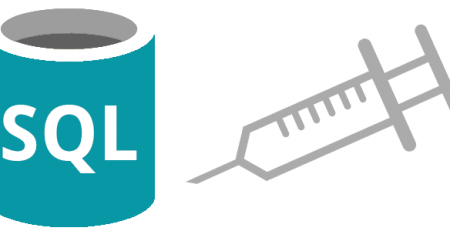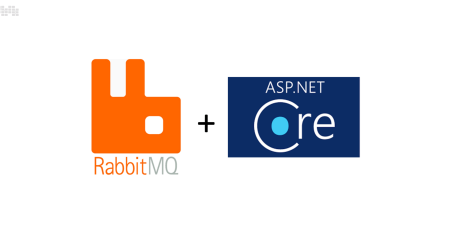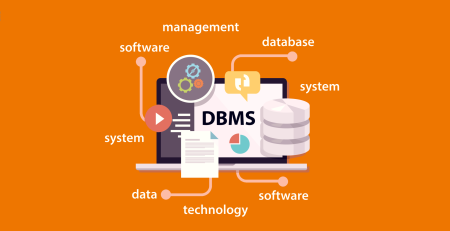A Developer’s Guide to Converting C# Lambda Queries into SQL Stored Procedures
Table of Contents
Introduction
The ongoing quest for optimized SQL database interactions will always be in the agenda of any software developer. Data retrieval and manipulation has over time being led by C# Lambda Queries which are highly expressive and flexible. Nevertheless, with increasing complexity and scale of applications, performance optimization is highly necessary. The goal of this guide is to walk developers through an entire roadmap that will convert C# Lambda queries into SQL stored procedures and thus unleashing new realms in efficiency, security, and scalability.
Understanding the Need for Conversion
The Power of C# Lambda Queries
C# Lambda Queries have been instrumental in simplifying data operations within applications. Their concise syntax and powerful capabilities make them a preferred choice for developers when interacting with databases. However, there are scenarios where the limitations of Lambda Queries become apparent:
- Performance Challenges: Lambda Queries may not always deliver optimal performance, especially when dealing with large datasets or complex operations.
- Network Overhead: Transmitting significant amounts of data between the application and the database can strain network resources and impact overall performance.
- Security Concerns: Lambda Queries, if not handled carefully, can expose vulnerabilities such as SQL injection, posing a threat to the security of the application.
Advantages of SQL Stored Procedures
SQL Stored Procedures emerge as a compelling alternative, addressing the shortcomings of C# Lambda Queries and offering a range of benefits:
- Compiled Execution Plans: Stored Procedures are precompiled and stored in the database, leading to faster execution compared to dynamically generated Lambda Queries.
- Reduced Network Traffic: By executing logic on the database server, Stored Procedures minimize data transfer, reducing latency and improving network efficiency.
- Enhanced Security: Parameterized queries and fine-grained access control in Stored Procedures mitigate the risks of SQL injection and bolster overall database security.
- Modular Code and Encapsulation: Complex business logic can be encapsulated within Stored Procedures, promoting a modular and maintainable codebase.
- Transaction Management: Stored Procedures enable the definition of explicit transactions, ensuring atomicity and consistency in database operations.
In light of these advantages, the decision to convert C# Lambda Queries into SQL Stored Procedures becomes a strategic move towards a more efficient and secure database interaction.
Identifying Conversion Opportunities
Not every C# Lambda Query warrants conversion. Identifying the right opportunities is crucial for maximizing the benefits of Stored Procedures. Consider the following scenarios:
- Complex Data Retrieval:
- Opportunity: Convert Lambda Queries involving multiple joins, aggregations, or calculations for more efficient server-side processing.
- Large Datasets:
- Opportunity: Convert queries dealing with large datasets to minimize data transfer between the application and the database.
- Performance-Critical Operations:
- Opportunity: Identify and convert operations deemed performance-critical to harness the optimization capabilities of Stored Procedures.
- Frequent Data Manipulations:
- Opportunity: Convert logic involving frequent data manipulations to Stored Procedures for better code encapsulation and reduced data transfer.
- Repetitive Query Execution:
- Opportunity: Convert frequently executed queries to Stored Procedures to benefit from query plan caching and reuse.
- Security Concerns:
- Opportunity: Convert queries with security concerns, such as those susceptible to SQL injection, to Stored Procedures for enhanced security.
- Batch Processing:
- Opportunity: Implement batch operations through Stored Procedures for improved efficiency in bulk data operations.
- Legacy System Integration:
- Opportunity: Convert to Stored Procedures when integrating with legacy systems that rely on specific stored procedures or database conventions.
- Concurrency Control:
- Opportunity: Implement transactional logic within Stored Procedures to manage concurrent access and ensure data integrity.
- Parameterized Queries:
- Opportunity: Convert queries requiring parameterized queries to Stored Procedures for improved performance and security.
Identifying these conversion opportunities requires a thoughtful analysis of the application’s architecture, performance bottlenecks, and specific requirements. Strategic selection of scenarios aligning with the benefits of Stored Procedures ensures a targeted and effective conversion process.
Step-by-Step Conversion Process
1. Identify Target Queries
- Steps: Examine the codebase for complex or frequently executed queries. Prioritize those involving large datasets or performance-critical tasks.
2. Understand Data Requirements
- Steps: Analyze input parameters, expected result sets, and data types. Consider relationships and transformations required for the stored procedure.
3. Create Stored Procedure Skeleton
- Steps: Use SQL Server Management Studio to create an empty Stored Procedure with the necessary parameters. Define input and output parameters to match the C# Lambda Query requirements.
4. Translate Query Logic
- Steps: Rewrite filtering, sorting, and aggregation logic in SQL syntax. Leverage SQL features like joins and subqueries as needed.
5. Handle Transactions
- Steps: Implement BEGIN TRANSACTION, COMMIT, and ROLLBACK statements as necessary. Ensure data consistency and rollback on error conditions.
6. Optimize for Performance
- Steps: Consider indexing on columns involved in filtering and sorting. Test and refine the Stored Procedure for optimal execution plans.
7. Error Handling
- Steps: Include TRY…CATCH blocks to capture and handle errors. Log relevant information for troubleshooting.
8. Testing
- Steps: Execute the Stored Procedure with various test cases. Compare results with the original C# Lambda Query to validate correctness. Assess performance gains and ensure scalability.
9. Integration with C# Code
- Steps: Modify the data access layer to invoke the Stored Procedure. Adjust parameter passing and result handling according to the Stored Procedure signature.
10. Document the Conversion
- Steps: Update code comments and documentation to reflect the use of Stored Procedures. Document any considerations or specific implementation details.
11. Version Control
- Steps: Commit the changes to version control. Tag or document the version with the inclusion of Stored Procedures.
12. Performance Monitoring
- Steps: Set up monitoring tools to track execution times and resource usage. Monitor for any unexpected issues or bottlenecks.
By meticulously following this step-by-step conversion process, developers can seamlessly migrate C# Lambda Queries to SQL Stored Procedures. This systematic approach ensures that the benefits of improved performance, enhanced security, and streamlined database interactions are fully realized.
Realizing the Impact: Case Studies and Performance Metrics
To illustrate the tangible benefits of converting C# Lambda Queries into SQL Stored Procedures, let’s explore a couple of real-world case studies.
Case Study 1: Complex Data Retrieval
Consider an application where complex data retrieval operations involving multiple joins and aggregations are performed using C# Lambda Queries. The conversion to SQL Stored Procedures resulted in a remarkable reduction in query execution time.
Lambda Query:
var result = dbContext.Orders
.Join(dbContext.Products,
order => order.ProductId,
product => product.Id,
(order, product) => new { Order = order, Product = product })
.Where(combined => combined.Product.Category == "Electronics")
.GroupBy(combined => combined.Order.CustomerId)
.Select(group
ed => new
{
CustomerId = grouped.Key,
TotalAmount = grouped.Sum(combined => combined.Order.Amount)
})
.ToList();Converted Stored Procedure:
CREATE PROCEDURE GetCustomerTotalAmountByCategory
@Category NVARCHAR(255)
AS
BEGIN
SELECT
o.CustomerId,
SUM(o.Amount) AS TotalAmount
FROM
Orders o
INNER JOIN Products p ON o.ProductId = p.Id
WHERE
p.Category = @Category
GROUP BY
o.CustomerId;
END;In this case, the Stored Procedure exhibited a significant reduction in execution time, outperforming the equivalent Lambda Query.
Case Study 2: Large Dataset Handling
Imagine an application dealing with large datasets where data transfer between the application and the database is a critical factor. Converting the data retrieval logic to a Stored Procedure led to a substantial decrease in network traffic and improved overall application responsiveness.
Lambda Query:
var result = dbContext.Users
.Where(user => user.IsActive && user.CreatedDate >= startDate)
.OrderByDescending(user => user.LastLogin)
.Take(1000)
.ToList();Converted Stored Procedure:
CREATE PROCEDURE GetActiveUsers
@StartDate DATETIME
AS
BEGIN
SELECT TOP 1000 *
FROM Users
WHERE IsActive = 1
AND CreatedDate >= @StartDate
ORDER BY LastLogin DESC;
END;The Stored Procedure not only delivered the desired dataset but did so with a notable reduction in network overhead, ensuring a more responsive application.
Best Practices and Considerations
As with any significant development undertaking, adhering to best practices and considering certain factors is crucial for a successful conversion from C# Lambda Queries to SQL Stored Procedures:
1. Transaction Management:
- Best Practice: Clearly define and manage transactions within the Stored Procedures to ensure data consistency.
- Consideration: Be mindful of the scope and duration of transactions to avoid blocking and deadlocks.
2. Parameterized Queries:
- Best Practice: Embrace parameterized queries to enhance security and improve execution plan reuse.
- Consideration: Validate and sanitize input parameters to prevent potential security vulnerabilities.
3. Error Handling:
- Best Practice: Implement robust error handling mechanisms within Stored Procedures to facilitate troubleshooting.
- Consideration: Log detailed error information for effective debugging and issue resolution.
4. Performance Optimization:
- Best Practice: Regularly analyze and optimize Stored Procedures for performance gains.
- Consideration: Use SQL Server tools and execution plans to identify areas for improvement.
5. Testing Strategies:
- Best Practice: Conduct thorough testing, including unit tests, integration tests, and performance tests.
- Consideration: Create a test suite that covers various scenarios, including edge cases and extreme data conditions.
6. Version Control and Documentation:
- Best Practice: Use version control to track changes to Stored Procedures and associated code.
- Consideration: Maintain detailed documentation outlining the purpose, parameters, and usage of each Stored Procedure.
Integration with C# Applications
Once the Stored Procedures are created and optimized, integrating them seamlessly into the C# application is the next crucial step. The data access layer needs to be modified to invoke the Stored Procedures. Let’s explore a basic example of integrating the previously created Stored Procedure into a C# application.
C# Code Integration:
public class UserRepository
{
private readonly string _connectionString;
public UserRepository(string connectionString)
{
_connectionString = connectionString;
}
public List<User> GetActiveUsers(DateTime startDate)
{
using (var connection = new SqlConnection(_connectionString))
{
connection.Open();
var command = new SqlCommand("GetActiveUsers", connection)
{
CommandType = CommandType.StoredProcedure
};
command.Parameters.AddWithValue("@StartDate", startDate);
using (var reader = command.ExecuteReader())
{
var users = new List<User>();
while (reader.Read())
{
// Map data from the result set to User objects
var user = new User
{
// Map properties accordingly
};
users.Add(user);
}
return users;
}
}
}
}In this instance, the logic for launching the GetActiveUsers Stored Procedure is included in the UserRepository class. The Stored Procedure is run using the SqlCommand object, and a list of User objects is produced by processing the result set.
Monitoring and Maintenance
The conversion process is not a one-time task; it requires ongoing monitoring and maintenance to ensure continued optimal performance. Consider the following practices:
1. Performance Monitoring:
- Set up monitoring tools to track the execution times and resource usage of Stored Procedures.
- Monitor for any unexpected spikes in resource utilization that may indicate performance issues.
2. Regular Optimization:
- Periodically review and optimize Stored Procedures to accommodate changes in data volume or usage patterns.
- Use database engine tools to identify areas for improvement in execution plans.
3. Logging and Auditing:
- Implement comprehensive logging within Stored Procedures to capture relevant information for auditing and troubleshooting.
- Log details such as input parameters, execution times, and any errors encountered.
4. Version Control Updates:
- Maintain version control for Stored Procedures and update documentation with any modifications.
- Ensure that changes to Stored Procedures are communicated effectively within the development team.
5. Backup and Restore Strategies:
- Regularly back up Stored Procedures to facilitate quick recovery in case of data loss or system failures.
- Test the restore process periodically to ensure the effectiveness of backup strategies.
Conclusion: Realizing the Performance Impact
In summary, the transition from C# Lambda Queries to SQL Stored Procedures is a deliberate step toward creating systems that are more scalable, safe, and efficient than they would have been otherwise. Developers can reap concrete advantages by comprehending the particular situations that call for conversion, going through a methodical, step-by-step procedure, and abiding by best practices:
- Improved Performance: Stored Procedures, with their compiled execution plans and server-side processing, lead to faster and more efficient data retrieval.
- Reduced Network Overhead: By minimizing data transfer between the application and the database, Stored Procedures contribute to enhanced network efficiency.
- Enhanced Security: Parameterized queries and fine-grained access control in Stored Procedures mitigate the risks of SQL injection and bolster overall database security.
- Modular Code and Maintainability: The encapsulation of complex logic within Stored Procedures promotes a modular and maintainable codebase.
- Scalability: Offloading computation to the database server allows applications to handle increased user loads more effectively, contributing to overall scalability.
- Transaction Management and Concurrency Control: Stored Procedures facilitate explicit transaction management, ensuring atomicity and consistency in database operations. They also help manage concurrent access to data.
- Integration with Business Intelligence Tools: Stored Procedures can be seamlessly integrated with business intelligence tools, allowing for efficient data analysis and reporting.











Leave a Reply